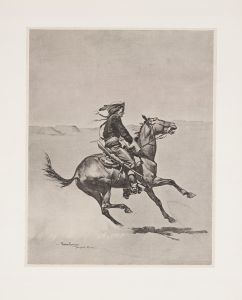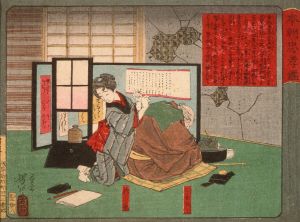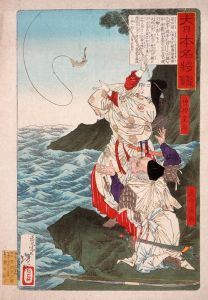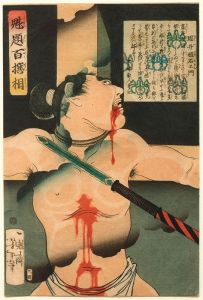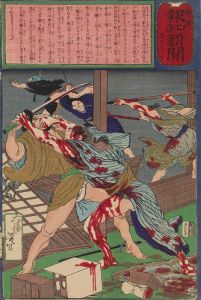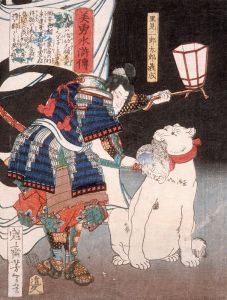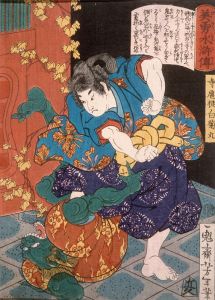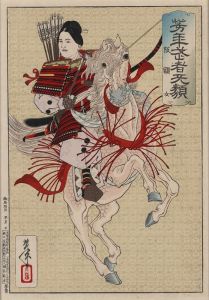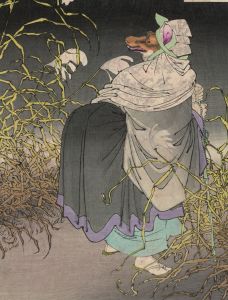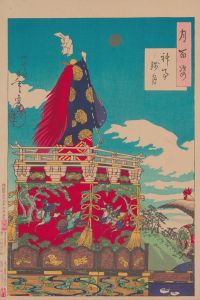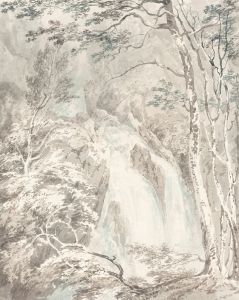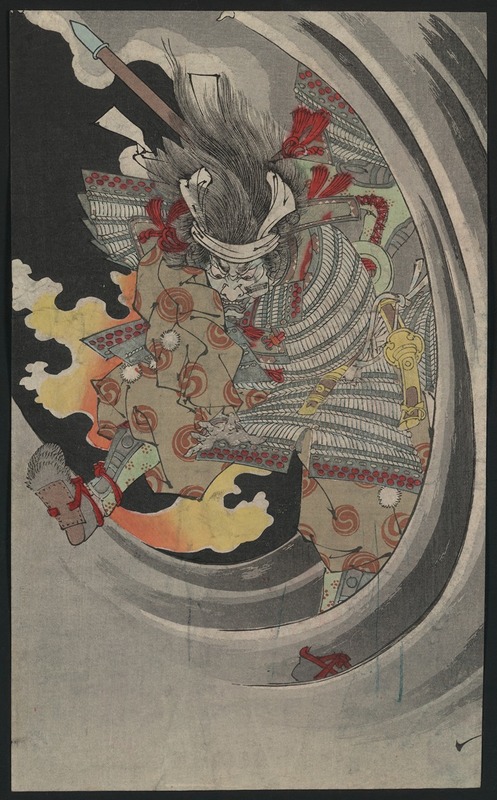
Nunobiki no Taki Akugenta Yoshihira no Naniwa Jirō o Utsu
A hand-painted replica of Tsukioka Yoshitoshi’s masterpiece Nunobiki no Taki Akugenta Yoshihira no Naniwa Jirō o Utsu, meticulously crafted by professional artists to capture the true essence of the original. Each piece is created with museum-quality canvas and rare mineral pigments, carefully painted by experienced artists with delicate brushstrokes and rich, layered colors to perfectly recreate the texture of the original artwork. Unlike machine-printed reproductions, this hand-painted version brings the painting to life, infused with the artist’s emotions and skill in every stroke. Whether for personal collection or home decoration, it instantly elevates the artistic atmosphere of any space.
Tsukioka Yoshitoshi (1839–1892) was a prominent Japanese ukiyo-e artist, known for his innovative and dramatic woodblock prints. One of his works, Nunobiki no Taki Akugenta Yoshihira no Naniwa Jirō o Utsu, is part of his larger body of work that often depicted historical and legendary figures, as well as dramatic scenes from Japanese folklore and history.
This particular print portrays a moment involving Akugenta Yoshihira, also known as Minamoto no Yoshihira (1141–1160), a warrior of the Minamoto clan during the late Heian period. Yoshihira was the son of Minamoto no Yoshitomo, the head of the Minamoto clan, and played a role in the Heiji Rebellion (1159–1160), a conflict between the Minamoto and Taira clans. After the Minamoto's defeat in the rebellion, Yoshihira was captured and executed by the Taira clan. His life and tragic end have been the subject of numerous literary and artistic works in Japan.
The title of the print references Nunobiki Falls, a famous waterfall located in Kobe, Japan. The falls have been celebrated in Japanese literature and art for centuries, often symbolizing natural beauty and the power of nature. While the exact connection between the depicted scene and the waterfall is not entirely clear, it is possible that the setting serves as a dramatic backdrop for the confrontation described in the title.
Yoshitoshi's work is characterized by its dynamic composition, vivid colors, and attention to detail, all of which are evident in this print. His ability to convey emotion and movement in his depictions of historical and legendary subjects has made him one of the most celebrated ukiyo-e artists of the late Edo and early Meiji periods. This print is an example of his skill in blending historical narrative with artistic expression, capturing a moment of tension and drama.
As with many of Yoshitoshi's works, this print reflects his interest in exploring themes of loyalty, conflict, and the human condition, often through the lens of historical or legendary events. It is part of his broader contribution to the ukiyo-e tradition, which was undergoing significant changes during his lifetime due to the modernization of Japan and the decline of woodblock printing as a dominant art form.





